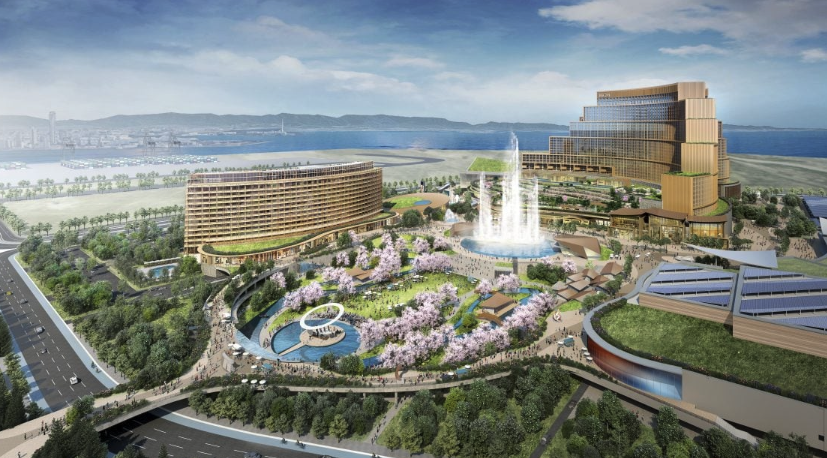MGM Resorts International’s flagship integrated resort in Osaka project has officially broken ground last month, and despite having faced complex regulatory hurdles and rising construction costs, it is still on track for its expected 2030 opening, according to Ed Bowers, President of Global Development at MGM Resorts.
Speaking today at the G2E Asia gaming conference at The Venetian in Macau, Bowers acknowledged the ambitious scope of the project while warning of the challenges ahead. “Japan’s complex regulatory framework has required careful navigation,” he said. “And rising construction costs have reached levels previously unseen in the country.”
The 1.27-trillion yen (MOP70.7 billion/$8.90 billion) resort, part of a consortium between MGM and Japan’s ORIX Corporation, is being developed on Yumeshima Island in Osaka Bay—an artificial island that also hosts the 2025 World Expo.
“I attended the Expo a couple of weeks ago and can confidently say that Osaka and Japan did a remarkable job ensuring everything was completed on time,” Bowers said. “The wooden ring structure is an impressive feature, offering fantastic views over the Expo grounds, the Osaka skyline, and our ongoing construction site.”
Despite logistical and regulatory complexities, Bowers said the project remains on track. “We are moving forward with this landmark project, which remains on schedule to open in 2030,” he said.
The integrated resort will feature approximately 2,500 rooms across three hotel brands, 68,000 square meters of MICE (Meetings, Incentives, Conferences, and Exhibitions) space, a 3,500-seat theater, and a mix of Japanese cultural experiences, retail, and dining.
The casino will house 470 table games and 6,400 slot machines, making it one of the largest gaming venues in the world.
 Ed Bowers, President of Global Development at MGM Resorts
Ed Bowers, President of Global Development at MGM Resorts
The economic impact is expected to be substantial. “The project is set to contribute 160 billion yen (MOP8.8 billion/$1.1 billion) annually to Osaka’s economy through casino tax and entry fee payments,” Bowers said. “Additionally, it’s expected to generate approximately three-quarters of a billion US dollars for Japan’s national government.”
Osaka’s strategic location in the Kansai region makes it a prime hub for tourism. “Osaka is a vibrant city and a critical gateway to Western Japan, with direct access to key destinations like Kyoto and Nara,” Bowers said. “The region has a population of approximately 25 million, larger than the New York City metro area.”
The city’s infrastructure—three airports and high-speed train connections to Tokyo and other cities—further supports MGM’s vision. “In 2024, total passenger traffic across the three airports reached 50 million,” Bowers noted. “That’s a strong foundation for international tourism growth.”
Looking ahead, Bowers emphasized the importance of cooperation with Japanese authorities. “Securing post-regulation labor and working collaboratively with Japan’s regulators will be critical. Our goal is to ensure global best practices are implemented while aligning with Japan’s unique approach.”
As of now, Osaka is the only approved site for an integrated resort in Japan. “The government continues to assess applications for two additional licenses,” Bowers said. “But given Japan’s methodical approach, I don’t anticipate new concession awards before 2027.”
Despite the challenges, Bowers remains confident in the resort’s transformative potential. “I firmly believe this project will elevate international tourism, strengthen Japan’s MICE business, and solidify Osaka’s reputation as a premier global destination.”


AloJapan.com